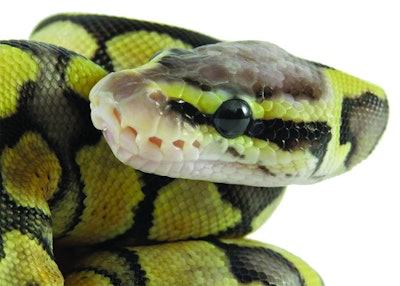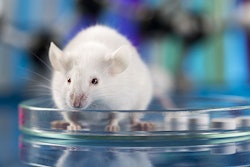
Using Google trends to determine trends in the reptile pet trade
The most commonly available reptiles are typically non-threatened, captive-bred and/or domestically obtained, which means they are also largely unregulated and unmonitored, resulting in a large portion of the reptile pet trade remaining unknown. In this study, the past, current and future trends of the most popular reptiles in the pet trade were examined.
Google Trends was used to determine the global popularity of the most popular pets from 2004 to 2020 and compared to the results from an online survey sent to individuals involved in the reptile trade. The most popular pets from the previous five years were also compared globally across regions and countries. The results determined that the most popular reptile species during the last decade is bearded dragons, followed by ball pythons and leopard geckos. When asked what reptiles had lost the most popularity during the previous decade, respondents named green iguanas, Burmese pythons, chameleons, red-eared sliders and green anoles, concurring with what was found with Google Trends. The reptiles thought to be more popular in the upcoming decade by the survey participants were blue-tongued skinks, tegus, uromastyx, crested geckos and ball pythons — most of which did show an increase in popularity during the last decade, as indicated with Google Trends.
The results from Google Trends demonstrated that ball pythons and crested geckos have increased their popularity more than any other reptile in the last two decades. Reptile popularity also differed between countries, with bearded dragons the most popular reptile in Australia, Western Europe, the U.S. and Canada. Leopard geckos were the most popular reptile in Italy and Turkey, and ball pythons were the reptile of choice in Mexico, Indonesia and India. The general finding of this study is that the reptiles declining in popularity were mostly wild-caught or restricted due to regulations, while current and future species were captive-bred and available in many varieties or morphs. The most popular species were also docile, medium-sized and easy to handle, with relatively simple care requirements.
This study demonstrates that Google Trends can be a useful tool for determining relative popularity among reptiles, or any other pet group, with results closely mirroring those obtained through direct surveying of people involved in the pet trade. However, unlike surveys, this analysis is quick, quantifiable, and can show what is popular and in-demand not only at the global level but at much finer scales.
Source: Jose W. Valdez, 2021. Using Google Trends to determine current, past and future trends in the reptile pet trade. Animals online, March 2021. doi: 10.3390/ani11030676.
Analysis of the nutrient composition of selected commercial pet rabbit feeds
The aim of this study was to evaluate the chemical composition of pet rabbit feeds available on the market with respect to nutritional guidelines and to determine whether the manufacturer's guaranteed analysis differed from the measured analysis.
Samples of five different rabbit feeds were collected from sealed bags, three per each type of feed. The samples were then ground into a powder using a laboratory mill. Guidelines from the Association of Official Analytical Chemists (AOAC) were used to assess the basic chemical composition of the samples.
Four out of five feeds did not meet the minimum recommended level for crude fiber and analysis results for this nutrient were up to 67% lower than what was declared on the label. One feed did not meet the established minimum recommended level for crude proteins. In any of the feeds tested the nutrient levels matched the manufacturers guaranteed analysis. In four feeds, the deviations were outside the range of tolerance permitted by law.
Results indicate that in the analyzed feeds there is considerable non-compliance with current European Union (EU) guidelines for pet rabbit food and divergence from the manufacturers’ guaranteed analyses.
Source: Katarzyna Kazimierska and Wioletta Biel, 2021. Analysis of the nutrient composition of selected commercial pet rabbit feeds with respect to nutritional guidelines. JEPM online, October 2021. doi: 10.1053/j.jepm.2021.06.006.
Quality appraisal for pet foods available in Bangladesh
The study aimed to assess if the chemical composition of different avian, aquatic, dog and cat foods commonly available in Chattogram, Bangladesh adheres to the recommended standards.
Food samples were collected and subjected to proximate analysis for the dry matter (DM), crude protein (CP), crude fiber (CF), ether extract (EE), nitrogen free extract (NFE) and total ash (TA). The plant seeds used for ornamental birds exhibited substantial variability in terms of proximate components. The maximum variability was observed in case of CF contents (101.3%), followed by EE (88.3%), NFE (37.1%), CP (35.8%), TA (33.3%) and DM (2.9%) contents. The DM (94.6%) and EE (34.2%) were highest in the sunflower (Helianthus annuus), the CP was highest (24.9%) in the hemp (Cannabis sativa), the CF was highest (35.0%) in the chia (Salvia hispanica), the NFE was highest (83.3%) in the rice (Oryza sativa) and the TA was highest (6.8%) in the guji (Guizotia abyssinica) seeds. The mean values of the dog and cat foods revealed that DM, CP, CF, EE, NFE and TA were 93.4, 31.0, 2.6, 10.5, 49.1 and 6.8%, respectively for different brands. The observed variations among minimum and maximum values were DM 3.0%, CP 12.7%, CF 1.5%, EE 13.8%, NFE 26.9% and TA 3.2%. The proximate analysis of aquarium fish foods revealed that the mean values of DM, CP, CF, EE, NFE and TA were 94.6, 26.7, 4.2, 5.3, 51.7 and 6.8%, respectively for different brands. The observed variations among minimum and maximum values were DM 1.9%, CP 5.2%, CF 1.5%, EE 1.6%, NFE 5.7% and TA 1.6%.
Overall, all the brands met or exceeded the minimum standards. Pets being sensitive to food allergy in addition to proximate analysis, feeding trials are recommended to ensure acceptability, palatability and digestibility of the pet foods.
Source: Rupom Devnath et al., 2021. Quality appraisal for the ornamental bird, fish, dog and cat foods available in Bangladesh. RRJoVST online, October 2021. doi: 10.37591/RRJoVST.
For the latest in pet nutrition research


















